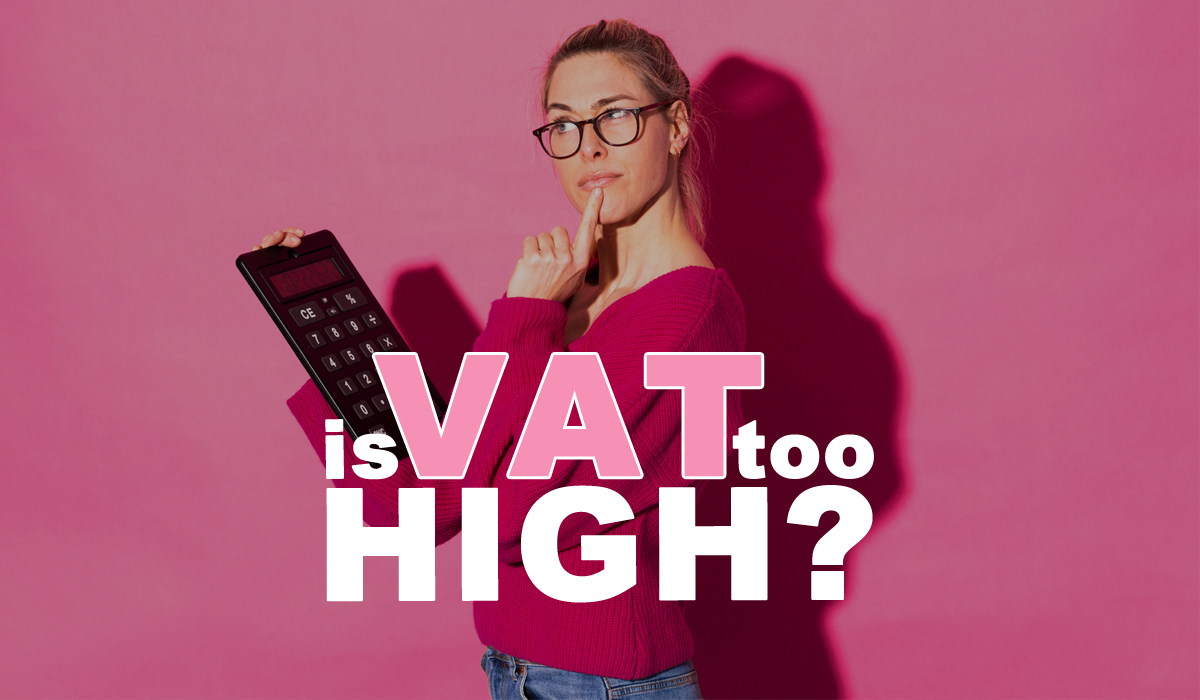Commissioned by the National Hair & Beauty Federation (NHBF), an independent discussion paper by Pragmatix Advisory Ltd was recently published – Avoiding the cliff edge: considering possible options for a VAT threshold smoothing mechanism.
The paper sets out possible options for the future rather than recommending just one solution for a change in the current VAT system. The aim of the paper is to generate discussion within our sector, the government and other industry organisations.
What is VAT?
Value Added Tax (VAT) is the tax that all businesses must pay when their turnover is higher than £85,000. It’s a way for the government to collect money to pay for public services like schools, hospitals and roads, and is added to the price of most goods and services you buy. Along with income tax and national insurance, VAT is one of the largest contributors to these essential public services. The £85,000 mark is known as the VAT threshold and the United Kingdom has one of the highest thresholds in Europe.
Why does the VAT Threshold matter?
The current VAT rate of 20% leads to a cliff edge for businesses at the threshold of £85,000. Because there is no gradual increase, many businesses find the transition to VAT too challenging, thus making growth more difficult. On top of this, many businesses deliberately stay under the VAT threshold, with some using tax avoidance measures – cash in hand, for example. This potentially reduces overall economic activity for businesses, as well as reduced tax revenues for the Treasury.
What is the industry’s view?
According to multiple NHBF State of the Industry surveys across 2023, hair and beauty businesses hold mixed views on the VAT Threshold:
- 86% of hair and beauty businesses supported a graduated approach.
- 50% say that a reduction in VAT would be most beneficial for their business.
- 25% say that raising the VAT registration threshold would help their business.
- 7% felt that lowering the threshold would help their business.
- 17% of sector businesses are signed up to the VAT flat rate scheme.
What does the paper tell us?
The paper includes case studies from Finland and the Netherlands that show the positive impact of lower VAT rates. The Netherlands, for example, lowered VAT to 6% in the early 2000s for labour-intensive services, this led to the creation of 4000 sector jobs.
The paper also identifies smoothing mechanisms to change the current VAT system to benefit businesses, encouraging growth and expansion and potentially increasing tax revenues, namely:
- Non-fiscally* neutral options: i.e. reduced VAT revenue for the government. The report models two options where graduated VAT could start at £85,000 – with a moderately graduated option, HM Treasury would see a loss of £2.5 billion in VAT revenue, counteracted by an additional £2 billion in increased compliance. (*Fiscal means relating to government revenue, especially taxes.)
- Five fiscally neutral options: i.e. the government would see no loss in VAT revenue. From ‘least graduated’ to ‘most graduated’, VAT starting from a lower rate would increase in steps towards the current standard rate of 20%.
The paper estimates that an additional £25.2 billion in turnover would be declared. This would return an additional £2.2 billion in VAT revenue to HM Treasury, with at least £33m of this coming from the hair and beauty sector. Whilst the paper estimates an administrative cost for businesses (£1000 per business per year in time and software costs), this would be a small share (2.5%) of average sector labour costs.
What do people think?
Caroline Larissey, Chief Executive of the NHBF: ‘93% of hair and beauty sector businesses are below the VAT threshold, some of which engage in cash-in hand work, split the business or engage self-employed workers to avoid having to register and pay VAT.
Whilst we have previously advocated for a smoothing mechanism as part of our campaigning on VAT, this is the first time we have set out a range of options for how it could work. The presence of the cliff edge within the current VAT regime incentivises businesses to remain below the threshold, forgo much needed growth and produce a lower tax yield for HM Treasury.
The report does not make specific recommendations; it is a discussion paper for debate and to engage further with our members and inform further dialogue with the government and other industry organisations.’
Rebecca Munro, Pragmatix Advisory: ‘Our research is based on careful analysis of official data – from the Office for National Statistics and the Department for Business and Trade – which show the number and turnover of businesses in different industries. It shows that around 47,000 firms in the United Kingdom are holding back below the £85,000 VAT turnover cliff edge, intentionally avoiding the cost and inconvenience of this blunt fiscal instrument.’
Jonny Haseldine, Policy Manager at the British Chambers of Commerce: ‘We have long advocated a smoothing mechanism around the VAT threshold, particularly one that minimises the administrative burden on business. We are currently assessing the options and this contribution from the NHBF is welcomed food for thought.’
Andrew Goodacre, CEO at the British Independent Retailers Association: ‘We support the proposals outlined in this report modelling different smoothing mechanisms. A review of the VAT thresholds and smoothing mechanisms is long overdue. Many independent retailers already sit above the VAT threshold, so we anticipate few problems for them with this change in regime, whilst some of the smaller ones should see some benefits’.
Find out more: NHBF





